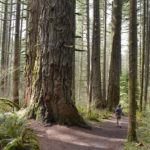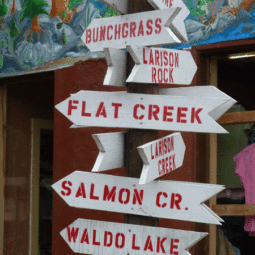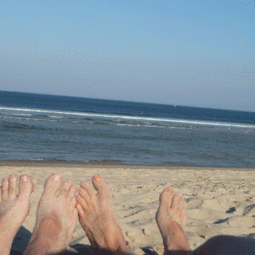It felt ironic that I later enjoyed a locally-fished shrimp and oyster po’boy for lunch. There were notes on menus about increases in pricing as fishermen anticipated the oil spill to effect fishing. I can’t help but think those are very conservative estimates. I can’t imagine really when those waters will be able to be commercially fished again and so much of the local cuisine is centered around seafood along the south.
With heavy thoughts to keep me company on the drive, I headed northeast through the rest of Mississippi and into Alabama. I stopped for the night in Montgomery with high hopes to see the Civil Rights Museum and a few other local attractions. I knew the South was more religious, but I didn’t anticipate everything – all the attractions in town plus almost all of the restaurants – being closed on Sundays. That left me with absolutely nothing to do, so I got an early start further east instead.
I stopped for lunch at the best soul food restaurant of my life in Atlanta, Georgia: The Busy Bee Cafe. I will never forget that meal! I was the only white person in the restaurant – something I have never experienced outside my trip to South Korea a few years ago. If you are within a hundred miles of Atlanta, you have to stop here. It was just amazing food. Smoky, richly flavored ribs, tangy fried green tomatoes, okra, cornbread and biscuits, sweet tea, and peach cobbler. I force-fed myself to the point of pain because it was so good.
In the Charleston area, I visited a historic plantation called the Magnolia Plantation. It is most noted for their collection of Camellias and Azaleas, both of which were not blooming during my visit. In terms of landscape history, it was interesting because the garden was originally planned as a formal French-style garden with boxwood hedges making knotted patterns. They were almost all replaced in favor of an English-style, pastoral design that became more popular.
What was the most fascinating to me during the trip was learning more about slavery life on plantations. Most slave quarters were burned after the Civil War and most plantations never talk about slavery or slave life on the plantation. If you ask, the common response is something like “Well, there were slaves, but they were treated well here.” Which, of course, is not true.
This plantation had a slave house dating from the 1850’s and similar buildings that houses “staff” after abolition. This small slave house is divided into two sides, with up to 12 people living on each side. There were gaps in the floor boards, walls, and ceiling. It must have been very cold when the temperatures dropped and very wet when it rained.
As a rice plantation, the work ended a bit earlier in the day than on tobacco or cotton farms. The slaves would be done around 3:00 in the afternoon and then supplemented their food with their own gardens and fishing and hunting. Of course the main house probably gave them less food as a result, but the unintentional biproduct was that the health and nutrition of the slaves was higher than among average slaves at the time.
I also found it interesting that African slaves did not place their crops in tidy little rows. Instead they organized their gardens like they do in Africa – using a version of the Three Sisters of corn, squash and beans. I found that interesting since Native Americans used the same or similar method. You can grow more food in the same-sized space with less resources. Currently they have a small, row garden but they are planning to install a traditional African-style garden in the next few years.
A couple books that were recommended for further learning were Black Majority, by Peter Wood, and Black Rice, by Judith Carney. This window into American history was probably the most interesting part of my journey through the South and I am eager to learn more.
It was now time to head north…










 This has become my
This has become my
 This is from South
This is from South


 All the ornamental grasses get cu
All the ornamental grasses get cu



Charleston is one of my favorite cities. What did you think?